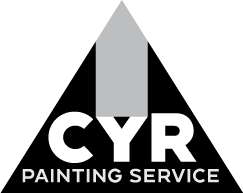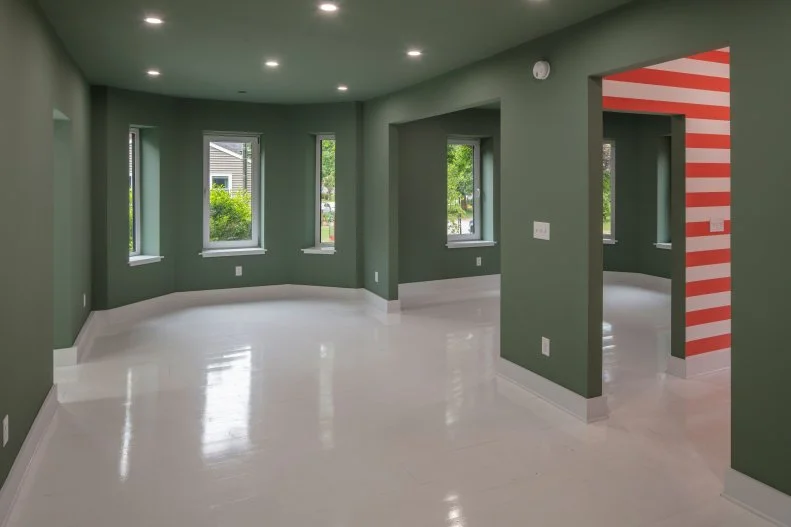You hired house painters to refresh your home’s exterior or update your interior walls—not to leave behind smudges, scattered tools, and a cluttered yard.
But after the painters leave for the day, you notice open paint cans on your porch, ladders leaning against your siding, and paint-covered drop cloths sprawled across your flower beds.
That’s not just a bad look—it’s a sign of disorganization, and possibly, subpar work.
In this guide, you’ll learn what proper painting cleanup should look like at the end of each workday during a residential paint job. Whether you’re in the middle of a repaint or vetting contractors, knowing what to expect can help you spot the difference between a reliable pro and a careless crew.
Why End-of-Day Cleanup Reflects Professionalism in House Painting
The way painters treat your home at the end of the day tells you everything about their values. Clean, orderly painters are almost always the ones who prep properly, use high-quality materials, and respect your property.
Why Painting Cleanup Matters
-
Safety: Drop cloths, tools, and ladders left out create trip hazards for you, your family, and even your pets.
-
Protection: Proper cleanup protects your landscaping, walkways, furniture, and painted surfaces from damage or contamination.
-
Respect for Your Home: A clean jobsite shows that the painters see your home as more than just a worksite—it’s your living space.
-
Work Quality: Sloppy cleanup often reflects a rushed or careless painting process.
Cleanup isn’t just about aesthetics—it’s about accountability.
What Professional Painters Do at the End of Each Day
Professional residential painters follow a checklist at the end of each day. It’s not improvised—it’s part of their process and project management routine.
Typical End-of-Day Painting Cleanup Tasks
| Area | Cleanup Task | Why It Matters | Tools Used |
|---|---|---|---|
| Tools & Equipment | Clean brushes, wrap rollers, store extension poles | Prevents dried paint, extends tool life | Bucket cleaner, brush combs, bins |
| Paint Storage | Reseal paint cans, label for rooms, remove used trays | Avoids spills, helps for touch-ups later | Painter’s tape, sealable containers |
| Outdoor Areas | Fold tarps, store ladders, sweep up chips or dust | Keeps yard clean, avoids damage to landscaping | Drop cloths, brooms, covered bins |
| Indoor Spaces | Ventilate areas, clear plastic sheeting, tidy up supplies | Allows safe reentry and use of rooms | Fans, zip walls, trash bags |
You should be able to walk through your home at the end of the day and feel confident—not cautious.
Painting Cleanup Expectations for Different Parts of Your Home
Different parts of your house require different cleanup strategies. A tidy living room and a clean driveway don’t require the same approach—but they both deserve the same level of care.
A. Interior Painting Cleanup
Professional painters know that when working inside your home, they’re in your personal space.
End-of-day cleanup should include:
-
Removing or tidying drop cloths
-
Storing tools neatly in a designated area (not your kitchen counter)
-
Ventilating recently painted rooms
-
Removing tape or plastic wrap if no longer needed
-
Sweeping or vacuuming up any dust or debris from sanding
You should be able to use your home (or parts of it) comfortably between workdays.
B. Exterior Painting Cleanup
Outdoor jobs often span multiple days. Cleanup should prevent hazards and protect your home and yard.
Look for:
-
Tarps and ladders stored out of walkways
-
All paint cans sealed and brought off the lawn or driveway
-
No loose flakes or sanding dust left around the perimeter
-
Secure storage of tools to prevent theft or weather damage
Well-organized painters often designate a corner of your garage or shed (with your permission) to store materials safely.
Red Flags: Signs of Poor Painting Cleanup
Sloppy cleanup today often means sloppy painting tomorrow. Here are common red flags that suggest your painter isn’t maintaining professional standards:
What to Watch For
-
Open paint cans drying out in the sun
-
Ladders leaning unsecured against siding
-
Used drop cloths left out overnight in wet or windy weather
-
Sandpaper, wrappers, or paint chips on the ground
-
Rollers or brushes caked in dried paint
-
Plastic taped over windows days longer than necessary
If cleanup is visibly lacking, you might also find more subtle signs of poor prep—like missed spots, uneven edges, or premature peeling after the job’s done.
What Pro House Painters Communicate About Cleanup
Top-tier painters don’t just clean up well—they talk to you about how and when they’ll do it.
What Should Be Discussed Upfront
Before painting starts, your painter should tell you:
-
Where tools and materials will be stored overnight
-
Which areas of your home will be accessible daily
-
What cleanup will involve at the end of each day
-
Who you should contact with concerns during the project
Painters working inside your home may even send you a daily update via text or email so you know what was completed—and what’s safe to use.
Questions to Ask Before Hiring a House Painter
Don’t wait until your yard is covered in paint chips or your hallway smells like a solvent shop. Ask the right questions upfront:
Interview Questions About Painting Cleanup
| Question | What a Pro Will Say | What to Watch Out For |
|---|---|---|
| “What does your daily cleanup include?” | “We seal all paint, fold up tarps, and sweep up.” | “We clean up at the end—don’t worry about it.” |
| “Where will you store tools overnight?” | “We’ll keep them in a garage corner if allowed.” | “We usually just leave them where we stop.” |
| “Will my family be able to use parts of the house?” | “Yes, we’ll make sure to clean paths daily.” | “Probably not—it’s best to stay out entirely.” |
| “Do you leave anything behind at night?” | “Only sealed paint and maybe a labeled ladder.” | “Most stuff stays where it is overnight.” |
You’re not being picky—you’re protecting your property. Use this checklist from the EPA for hiring lead-safe certified painters.
What a Clean Paint Site Says About the Work Itself
Clean painters are usually careful painters. They respect the job from start to finish.
What Good Painting Cleanup Tells You
-
Prep work is being done thoroughly—no sanding dust left behind means it’s being cleaned and primed properly.
-
Tools are well maintained, meaning fewer drips, cleaner lines, and better finish.
-
Materials are stored correctly, so colors remain consistent and no product is wasted.
-
Crews are supervised, and daily cleanup is part of a system—not an afterthought.
A chaotic jobsite usually means a chaotic process behind the scenes.
How to Set Painting Cleanup Expectations in Your Agreement
To protect yourself (and your home), make sure painting cleanup is clearly written into the contract.
What to Include in Your Estimate or Agreement
-
Daily cleanup plan (indoor and outdoor if applicable)
-
Final cleanup tasks, including removal of plastic and tape
-
Storage arrangements for paint or tools (and time limits)
-
Site restoration clause:
-
“Project is not complete until surfaces are cleaned, items replaced, and materials removed.”
-
If your painters are unwilling to discuss painting cleanup upfront, that’s a red flag.
Clean Painters = Pro Painters
When the workday ends, the only thing left behind should be progress—not paint chips, fumes, or tangled drop cloths.
Professional painting cleanup is one of the clearest signs that you’ve hired a quality crew. It’s not just about being neat—it’s about accountability, craftsmanship, and respect for your home.
If you’re dealing with a painter who doesn’t clean up properly, ask yourself: If they’re careless about the basics, what else are they rushing?
Want painters who treat your home like their own and clean up at every stage?
Contact us today for a free house painting estimate—and experience the difference a clean jobsite makes.




